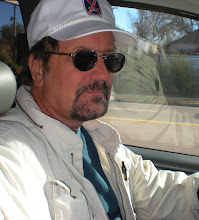ISIS
leader 'repeatedly raped and kept 26-year-old American aid worker hostage Kayla
Mueller as his personal sex slave' before she was 'killed by US air strike'
The
parents of Kayla Mueller revealed that their daughter was repeatedly raped by
ISIS caliph Abu Bakr al-Baghdadi before her death
ISIS
announced the 26-year-old's death on saying she had been killed in a coalition
air strike
However,
ISIS knew that the U.S. was trying to rescue the aid worker and just how she
died has never been confirmed
Two
Yezedi girls, 16 and 18, who escaped the compound where Kayla was being
held, revealed details of the sexual abuse
Kayla
would have turned 27 years old.
'We were told Kayla was tortured, that she was the property of
al-Baghdadi. We were told that by the government,' Kayla's parents, Carl and
Marsha Mueller, said.
We were told Kayla was tortured, that
she was property of al-Baghdadi.
American officials allegedly learned about Kayla's abuse, after
interviewing two Yezedi girls, 16 and 18, who escaped from the same compound
where they were all held as sex slaves.
According to the escaped girls, Kayla was held in the home of Abu
Sayyaf, a Tunisian man in charge of ISIS' oil and gas revenue.
That was confirmed by Sayyaf's wife, Umm Sayyaf, who was captured
in a U.S. raid of the compound.
The caliph is said to have regularly visited the house to both
speak to Sayyaf and rape Kayla.
The new information on Kayla's abuse at the hands of ISIS's top
leader discredits reports that Kayla warmed to her captors and had even
willingly married a member of the state.
Those reports started when the Muellers received a smuggled letter
from their daughter a year into her captivity, that read: I am 'completely
unharmed and healthy (put on weight in fact); I have been treated w/the utmost
respect and kindness.'
Kayla was abducted in August 2013, while working in southern
Turkey with Syrian refugees. On August 3, she drove a friend into the bombed-out
Syrian city of Aleppo and was driving back when she was taken hostage. She
spent two and a half years as a prisoner of the Islamic State, before her death.
The U.S. became aware of Kayla's whereabouts in the Islamic State,
when a Yezedi girl escaped from the Sayyaf compound and was intercepted by U.S.
agents.
The military then mounted a plan to raid Sayyaf's compound to
rescue Kayla.
American officials have maintained a policy of not naming U.S.
hostages in the media, so as not to entice ISIS to publicly torture or murder
them for publicity.
But White House Chief of Staff Dennis McDonough accidentally
dropped Mueller's first name in a television interview, bringing renewed
attention to her case.
President Obama was then forced to answer what the U.S. was doing
to help Kayla, saying: 'What we can say is that, as has been true of all the
hostages, that we are deploying all the assets that we can working with all the
coalition allies that we can to identify her location. And we are in very close
contact with the family trying to keep them updated.'
Nine days later, ISIS announced that Kayla had been killed in a
coalition strike. The Pentagon maintains that she was murdered by her captors.
While they weren't able to save Kayla in time, U.S. forces did
eventually mount an attack on Sayyaf's compound.
The elite Delta Force team raided the Syrian compound in May, and
killed Sayyaf while taking into custody his wife and a treasure trove of ISIS
intelligence.
Umm Sayyaf gave extensive information to American interrogators
and has been turned over to the Iraqi Kurds for trial. The Muellers have been
told she can be expected to serve a long prison sentence, Mueller family
spokesman Emily Lenzner said.











